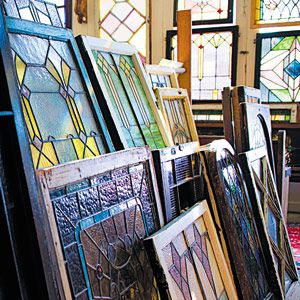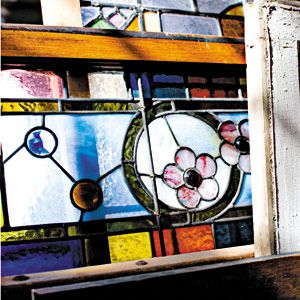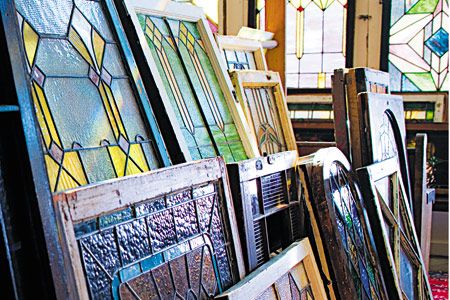
Most kids get their first glimpse of stained glass at a house of worship, but not me. I came downstairs all bleary-eyed one morning to find two 12-foot-tall colored glass mosaics depicting the baby Jesus in our living room. My mom rescued the windows from a church in Newark, New Jersey, that was being gutted. She couldn’t bear to see them destroyed. She also envisioned how nice they’d look in our home, a converted Victorian-era carriage house with soaring ceilings.
You see, my mom is a collector of all things old and beautiful, much of it—giant Buddhas, silk prayer rugs, bronze communion rails—religious in nature. To display the windows, she had a carpenter mount them in wooden shadow boxes with lights inside so they would glow from behind. They looked really cool at night, though house guests tended to whisper as if they were in some sort of chapel.
When we moved to a 1736 farmhouse with less lofty proportions, my mom donated the windows to a local museum. I guess that’s why today I love hanging out at the Cloisters, near my apartment in upper Manhattan. A medieval art outpost for the Metropolitan Museum of Art, the place has the most amazing European stained-glass windows, some dating to the 12th century.
I also get my fix at salvage yards that are filled with far simpler—and wholly secular—versions with floral and geometric motifs that typically sell for between $100 and $2,500. Unlike their Christian-themed predecessors, which often told biblical stories through pictures, the architectural stained-glass windows in Queen Anne, Craftsman, and Tudor-style houses were used for their beauty and function. Installed as sidelights flanking a front door or instead of standard double-hung windows ina dining room, stained glass provides privacy and can obscure an unsightly view without blocking natural light.

Many residential stained-glass designs were inspired by masterworks from artists such as Louis Comfort Tiffany, whose depictions of autumn landscapes and cascading wisteria vines are still copied today. Arts and Crafts–style oak trees by the California architectural firm Greene & Greene and stylized chevron patterns popularized in the early 1900s by Frank Lloyd Wright were also widely imitated.
When searching for a piece of stained glass to improve the appearance of my own 1930s Art Deco–style apartment, I settled on a Wright-like transom with a red diamond pattern. I liked its clean lines, but mostly I liked that it was free. It was propped against a wall in This Old House design director Amy Rosenfeld’s garage, and she was nice enough to give it to me. The great thing about windows is how versatile they are. I used mine as a door for a cabinet for bar glasses (see how, at right). I’ve also seen them used as shades hung from chains in front of bathroom
windows and as room dividers mounted between wooden posts. You could even secure a stained-glass panel in front of a fixed skylight with mounting brackets to create a colorful filter for sun and moonlight.
Like my mom, I’m always conjuring up ways to recycle architectural artifacts. But I prefer house parts to church parts. They tend to encourage conversation, rather than hush it.

